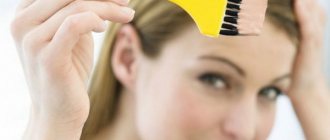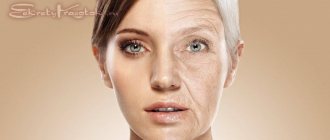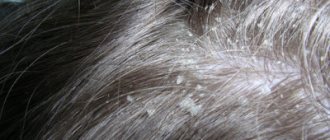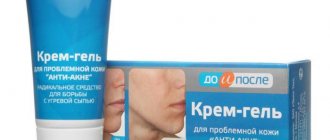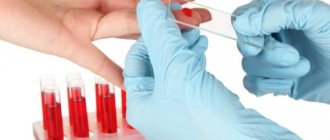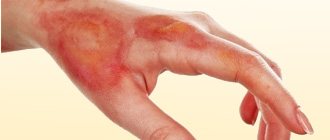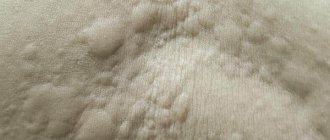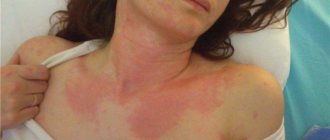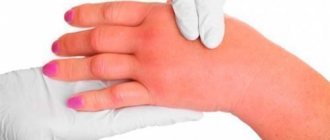Allergy to antibiotics is quite common and usually manifests itself in the form of various skin rashes. In some cases, a skin rash is accompanied by fever, Quincke's edema and other negative manifestations. But it is local reactions on the body that most often become the result of individual intolerance to the drug, exceeding its dosage or too long treatment, especially against the background of concomitant diseases or hereditary predisposition.
Manifestation of symptoms of the disease
Allergies after taking antibiotics
It has been observed that in approximately 85% of 100%, urticaria from antibiotics begins to appear in young children. However, adults also have a considerable risk of complications such as urticaria after taking strong medications. The advantage of this type of urticaria is easy differentiation from urticaria.
The localization, external signs and symptoms of this type of allergic reaction have a number of features. They have learned to identify urticaria after antibiotics and not confuse it with other, more serious skin diseases. It includes several types of manifestation, but has one name.
Allergies in a child
In a child, an allergy to an antibiotic has the same symptoms as in adults. It can only occur in more acute forms. This is due to the fact that the child’s body has a poorly developed immune system, and it is simply not ready for many reactions. But it should be understood that leaving an allergy to antibiotics in children unattended can lead to very sad consequences, and even death. It is impossible to train the human immune system by the duration of the reaction to drugs.
Red spots in a child after antibiotic therapy
So, an allergy after antibiotics in a child can manifest itself in the following reactions:
- itching after taking antibiotics;
- hives;
- swelling of the mucous membranes;
- angioedema;
- anaphylactic shock;
- thrush or candidiasis;
- nephrotoxic and hepatoxic effect;
- neurotoxic effect;
- hematological disorders;
- rash on the skin after taking antibiotics.
Itching – may appear within two weeks after starting antibiotics. The appearance of itching is determined by the amount of enzyme in the child’s body. In many children, the enzyme system is not fully formed, so when the production of the resource ends, itching begins to bother them. Itching from antibiotics can be caused by disruption of the functioning of the gastrointestinal tract due to changes in microflora. To avoid this reaction, an antibiotic sensitivity test is done.
Hives. A rash from antibiotics in a child most often occurs on the 2nd day of use. If it is possible to change the treatment, it is changed and the reaction disappears the next day. In cases where it is not possible to replace the drug, step therapy is carried out. This increases the risk of complications.
Swelling of the mucous membranes. It can occur in cases where there are chronic diseases of the gastrointestinal tract, diabetes mellitus, immune disorders, and poor hygiene.
Angioedema is the appearance of blisters on the skin. Disappears after discontinuation of the drug within 3 days.
Anaphylactic shock is dangerous due to the speed of its development. When taking antibiotics, it is recommended to always have antihistamines that can temporarily curb the manifestations of allergic reactions.
Candidiasis occurs as a result of a decrease in the body’s protective functions. Changes in the microflora of the mucous membranes give impetus to the development of fungus, which causes discomfort in the child.
Nephrotoxic and hepatoxic effects - occur in very rare cases in the presence of liver and kidney diseases. The attending physician must be notified of the presence of all chronic diseases in order to be able to prescribe a drug that will not harm the child’s internal organs.
Neurotoxic effect - occurs in the presence of disorders of the nervous system. A mild form of the neurotoxic effect manifests itself in headaches and dizziness. If you ignore the initial symptoms, the disease can develop into an acute form, which is manifested by atrophy of the auditory nerve, optic nerve and dysfunction of the vestibular apparatus. The younger children are, the greater the risk of damage to the nervous system. In order to protect your child from such terrible consequences, you can test for sensitivity to antibiotics.
Hematological disorders are an extremely rare reaction of the body to taking drugs. Occurs in the presence of anemia or agranulocytosis.
Types of urticaria
Classification of urticaria
Modern medical science knows several types of urticaria - acute and chronic, each with a specific treatment regimen.
Urticaria is classified into:
- Aerogenic - provoked by the entry of an allergen through the upper respiratory tract or through the mouth. The cause is: pollen from flowering plants, fungal spores, fur and fluff of domestic animals, indoor dust.
- Autoimmune - the cause is the destruction of body cells or their degeneration
- Infectious - the causes are infections that enter the body in various ways, including airborne droplets, through the wound surface, scratches and abrasions.
- Medicinal - due to the effect on the body of the plant base of many medications, as well as various types of antibiotics.
- Idiopathic - manifests itself due to a violation of the barrier functions of the body.
- Physical - a reaction that manifests itself to changes in temperature, contact with chemicals and compression.
- Nervous - manifests itself in adolescence, when the nervous system is rebuilt and malfunctions. Increased irritability, disruption of the digestive tract, problems with the genitourinary system, and interruptions in the functioning of the cardiovascular system contribute to the development of this type of urticaria.
Causes of hives after antibiotics
Factors that can trigger an allergic reaction
Hives after antibiotics do not always happen. Nevertheless, everyone should know what measures need to be taken to prevent it if it occurs. To know how and what to deal with, you need to understand the path of development of urticaria. The first appearance on the baby’s body should prompt parents to study the existing problem. Otherwise there may be irreparable consequences.
External factors affecting the body:
- cold;
- warm;
- water with the substances it contains;
- ultra-violet rays.
Factors that can trigger an allergic reaction are poor diet and substances in foods. When buying vegetables, fruits, and dairy products, we do not know what genetically modified products hold for us. There are a number of foods that can cause food allergies:
- milk and its derivatives;
- oranges, lemons;
- all kinds of nuts;
- honey and its derivatives;
- eggs;
- seafood.
The types of allergies described above occur as a response of the body to a certain substance contained in the product. There are cases that after puberty, a child’s body is capable of radical restructuring, and cases of allergic reactions may disappear.
But in the treatment of certain diseases, specialists can prescribe certain medications - antibiotics, which can again cause an attack of an allergic reaction to the same irritant that was before.
Some antibiotics, such as tetracycline and rifampicin, pose a real threat. In addition, a group of medications related to non-steroidal anti-inflammatory drugs can cause the risk of new manifestations of allergies. Allergy symptoms do not appear immediately, but after a few hours, and remain in the body for up to 14 days.
In adults, the causes of urticaria are contact with highly aggressive chemical substances (latex and various chemicals used in everyday life, as well as varnishes and paints used in everyday life). Another group of allergic reactions consists of various insect bites.
Urticaria is triggered not by environmental influences, but by the fact that a previously ingested substance already exists in the human body.
The main reasons and factors are:
- weakened immune system;
- hormonal imbalances;
- dysbacteriosis;
- diseases caused by fungi;
- diseases caused by parasites;
- autoimmune diseases.
What are the symptoms?
The appearance of a rash in the form of blisters
Hives are the first sign of illness in the body. Only knowing the cause of the allergic reaction can you prescribe the correct treatment regimen.
The appearance of a rash in the form of scarlet blisters when pressed, localized in the bends and folds of the skin, also on the face and torso, painful and itchy, causing a burning sensation, all this is an allergic process - urticaria.
Sometimes you can observe in children the spread of a rash on the mucous membranes of the nose, mouth and genitals. A sharp rise in temperature is possible, chills and malaise are felt.
In severe cases, severe dizziness, nausea and vomiting, diarrhea, and joint pain are observed. There may be swelling of the mucous membranes, leading to bronchial spasms, damage to the cardiovascular and urinary systems.
Complications
Drug-induced urticaria more often than other types of the disease leads to complications. The most serious are the following:
- dehydration of the body. It is more common in young children as a result of vomiting, fever and diarrhea that accompany allergies. Loss of fluid leads to dry skin, sunken eyeballs, weight loss, and the appearance of seizures. If left untreated, may lead to coma;
- Quincke's edema. Rapidly progressive swelling of the skin and mucous membranes, which can cause a decrease in the lumen of the larynx and asphyxia. Accompanied by a “barking” cough, hoarse speech, and the inability to take a full breath. Requires emergency hospitalization;
- anaphylactic shock. Sudden drop in blood pressure, severe weakness, loss of consciousness, abnormal heart rhythm. If there is a delay in providing resuscitation measures, it can cause death;
- Lyell's syndrome. An acute condition characterized by damage to the entire surface of the skin and mucous membranes, similar to second degree burns. It is accompanied by rapid dehydration of the body, kidney damage and often leads to death.
Complications also include secondary infection of open wounds and erosions resulting from scratching. This leads to the appearance of purulent inflammatory processes, accompanied by fever and chills. Most cases are observed in children.
source
Diagnostic methods
To differentiate urticaria from other types of allergic reactions, it is necessary to undergo research
Hives are a harmless allergic reaction that goes away on its own. This is a serious signal from the body, warning about existing allergic diseases.
To differentiate urticaria from other types of allergic reactions, it is necessary to undergo studies that include:
- blood chemistry;
- stool analysis to identify parasitic infestations in the body;
- special allergy tests;
- hormone analysis.
It often happens that when a certain medication is prescribed, a rash and swelling appear immediately, then the prescribed medication is simply canceled. But it also happens that after a long and prolonged course of treatment, which is coming to an end, urticaria appears.
To avoid such problems, it is imperative to do an allergy test for any new substance planned for introduction into the body. In the future, this will make the patient’s life much easier and help avoid dangerous situations associated with allergies.
Rules for the treatment of urticaria
To effectively cure hives you need to follow the steps
When a dermatologist conducts a full examination of the skin surface, examines the results of clinical tests, appropriate treatment will be prescribed. If you contact a specialist and find out the reasons, what to do and how to treat allergic urticaria will not be a big problem.
To effectively cure urticaria, you must follow the steps:
- Isolation from allergen. If possible, you should immediately stop taking the drug that caused the skin rash.
- Young children have their stomach washed and also given a cleansing enema.
- Proper dietary nutrition - maximum relief of the liver from the following foods: eggs, all kinds of nuts, sweets and baked goods, red fruits and vegetables, alcohol.
- Immediate use of drugs - antihistamines Levocetirizine, Desloratadine, Fexofenadine; for children from 6 months to 2 years - Zyrtec, Claritin, Erius, Xyzal.
- The appearance of a rash on the mucous membranes is washed with decoctions of medicinal herbs such as chamomile, St. John's wort, calendula and string, as well as a special Miramistin solution.
- To reduce itching on the skin, use ointments Fenistil, La-Cri, Akriderm.
- In extreme severe cases, when there is a tendency to edema, glucocorticosteroid drugs are used - Triacinolone, Dexamethasone, Betamethasone.
In addition, in some cases, when the necessary drugs are not at hand, and you need to act immediately, traditional medicine comes to the rescue.
For general discomfort, itching and burning, mixtures of medicinal herbs can help: chamomile, St. John's wort and calendula, a series mixed in equal proportions with water, infused in a water bath and the resulting cooled decoction lubricated the skin in areas of inflammation.
For children, you can arrange baths with chamomile and string.
A little about the symptoms of urticaria
An ailment such as urticaria is the first sign of serious diseases in the human body. Therefore, it is necessary to analyze more specifically how it manifests itself, what its symptoms are. Knowing the cause, it is possible to specify the treatment of urticaria and eliminate the root cause. The characteristics are quite simple: first, the appearance of blisters of different sizes. They contain liquid. You can even compare them to the burn that remains after coming into contact with nettles in nature. In principle, this is where the name of such characteristic rashes comes from. Where might it appear? Anywhere, on any part of the skin of the human body.
However, its frequent appearance, as noted by experts, is on the extremities. After this, it moves to the back or stomach. The size of such pimples or blisters can reach 10 centimeters in circumference. As soon as they appeared, they disappeared within two days at most.
All this happens on its own, without intervention or the use of additional dosage forms. After they disappear, absolutely nothing remains. This refers to scars, stains or other residual elements. If you scratch these blisters, there will be consequences, but these are mechanical damage, and not a remnant of the disease. Why was scratching mentioned? The rashes are associated with severe itching and a slight, barely noticeable burning sensation in the area where they appeared. Small children most often try to tear them off, which leaves a mark on the skin from the nails. The rash begins mainly at night or in the evening. After taking a shower, the skin begins to itch or burn. After this, rashes appear. There is no pain, but the unpleasant sensations cause discomfort. This often leads to Quincke's edema. Sometimes other more complex consequences arise.
Constant itching causes discomfort
Conclusions and methods of prevention
Timely contact with a specialist
It is not at all difficult to treat urticaria, if you have contacted a specialist in a timely manner and the cause of its occurrence has been clarified. If an allergic reaction to the drug occurs during its first use, the antibiotic should be discontinued.
It is more difficult if this is not possible and it is impossible to replace the drug. In this case, the stepwise desensitization method is used. Such manipulations can lead to certain risks and further complications, which occur in approximately 15% of patients.
Specialists are ready to take risks because they are justified. In order to cure the patient there is no other way, so sacrifices have to be made.
Action of antibiotics
The action of antibiotics is aimed primarily at eliminating pathogenic microflora.
Unfortunately, scientists have still not been able to ensure high selectivity of drugs. Therefore, along with the bad ones, the good microbes that inhabit the human body and are its symbiotes also die. Oddly enough, while helping to fight the infection, the antibiotic also greatly reduces natural immunity. And this creates favorable conditions for the proliferation of those bacteria that do not fall within their spectrum of action. This becomes one of the reasons why pimples and/or acne occur during treatment. But not the only one.


